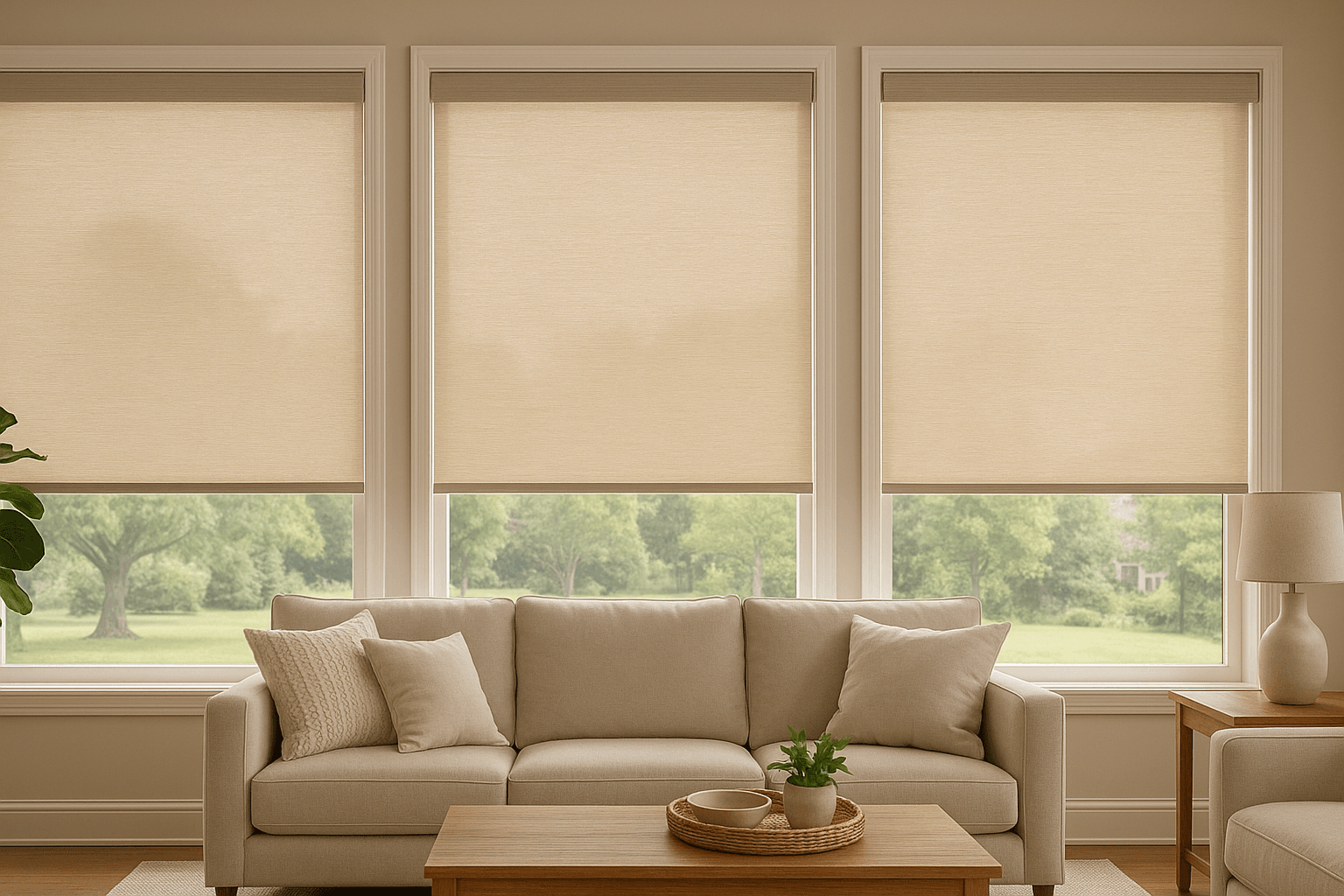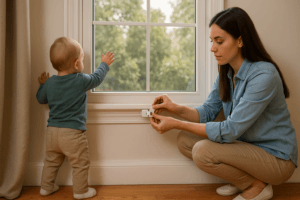Sunlight feels great — until it fades your sofa, heats up your living room, or leaves a sunburn on your favorite rug. For homeowners in Queen Creek, choosing the right window coverings is more than style; it’s about protection, comfort, and saving on energy bills. This guide cuts through the noise and shows the top UV-blocking shades that actually work for Arizona homes.
Why UV protection matters in Queen Creek (yes, seriously)
Arizona sun is one of a kind: bright, relentless, and, frankly, a little unforgiving. UV rays fade fabrics, damage hardwood floors, and speed up wear-and-tear on paintings and leather. You might not notice the damage day-to-day, but over months and years your house loses its “new” look.
Here’s the thing — blocking UV isn’t just cosmetic. It helps keep interiors cooler, or at least less angry at your AC. That translates to real savings. And homeowners? You protect investments: furniture, art, and the overall feel of your home. You know what? That matters.
No-nonsense talk: what actually blocks UV
Let’s not pretend all shades are created equal. Some stop most UV; others mostly dim light and look good on Instagram. Below are the reliable contenders.
- Solar (screen) shades — These are the workhorses. Made from tightly woven PVC or fiberglass fabrics, solar shades are measured by openness factor (how much you can see through). A low openness (1–3%) blocks more UV while still letting light in and preserving views.
- Cellular (honeycomb) shades — Great for insulation and surprisingly good at UV protection when lined or made with sunscreens. They trap air, help with Arizona heat, and can be light-filtering or room-darkening.
- Roller shades with reflective backing — These have a thin, reflective layer that bounces UV and heat away. They can reduce glare and keep rooms cooler without total darkness.
- Solar window film (paired with shades) — Not a shade itself, but a low-profile way to boost any shade’s UV defense. Works especially well on west- and south-facing windows that roast in the afternoon.
- Plantation Shutters and solid shutters — These don’t always stop UV completely, but when closed they block most light and heat. Plus — they’re timeless and cut glare like champs.
Quick comparison (handy table)
| Type | Typical UV Block (%) | Best For |
|---|---|---|
| Solar (1–3% openness) | 90–99% | Views + glare control |
| Cellular (lined) | 80–99% | Insulation + rooms needing privacy |
| Roller w/ reflective backing | 85–95% | Rooms that need high heat rejection |
| Solar film + shades | 90–99% | Peak sun windows (west/south) |
| Plantation shutters | 70–95% | Style + durable privacy |
How to pick the right shade for your room (because function beats flashiness)
First, ask these plain questions: Where does the sun hit? Do you want a view? Do you need complete darkness for naps or movie nights? Answers guide everything.
- Orientation matters. West-facing rooms in Queen Creek get that brutal afternoon sun — choose low openness solar shades or reflective options. South windows need steady heat control; cellular shades work wonders there.
- View vs. privacy. Solar shades let you keep the view while blocking UV. If privacy is key (bathroom, bedroom), go for lined cellular or room-darkening roller shades.
- Style and decor. Don’t sacrifice looks — there are plenty of fabrics and textures. Plantation shutters offer a classic feel; sleek rollers lean modern.
- Motorization and smart home. If you want convenience (and you probably do), motorized shades integrate with Alexa, Google Home, or HomeKit. Set schedules to lower during peak UV hours and raise later — smart and practical.
Real-world tips: what pros do (and homeowners should, too)
Let me explain how pros think. Installers look at glass type, frame, and sunlight patterns. They measure twice. They recommend layered solutions — for instance, pairing solar shades with reflective film on the harshest windows. Why double up? Because a shade alone can do a lot, but a film keeps the glass from heating and re-radiating energy back in.
- Measure for the frame, not the wall. Small gaps let light sneak in. Tight fits reduce bleed-through and boost effectiveness.
- Ask about UV ratings. Manufacturers often list UV blockage percentage. Ask for lab data or manufacturer specs — numbers matter.
- Think long-term. Cheap fabrics discolor and sag. Invest in a reliable fabric and a solid headrail; it pays off.
Cost, savings, and what’s worth it (let’s be practical)
You’re thinking, “How much?” Good. A few price ranges to set expectations.
- Entry-level solar or roller shades: lower initial cost, decent UV control.
- Mid-range cellular or high-end solar fabric: better Materials, higher UV block, longer life.
- Motorized systems and custom installations: higher upfront expense, but more convenience and energy savings over time.
Yes, it sounds like paying more now to save later — and it usually is. Shade systems that reduce heat gain can lower AC runtime, which matters in Queen Creek summers. The return often shows up in monthly bills and slower fading of furniture.
Maintenance: keep them working (and looking) without a fuss
Most modern shades are low-maintenance, but a little care goes a long way.
- Dust regularly. A microfiber cloth or vacuum brush keeps fabrics fresh.
- Spot-clean stains. Mild soap and water for most fabrics; avoid abrasive cleaners.
- Check mechanisms. Springs, cords, and motors should be inspected annually. If something sticks, fix it early — it’s cheaper than replacing the whole shade.
- Warranty matters. Ask about fabric warranties and UV failure guarantees. Good companies stand behind their Products.
Trends and seasonal notes (because fashion and sun patterns change)
You’ll see a lot of interest in sustainable fabrics and solar-reflective coatings lately. People are also adding automation to sync shades with weather forecasts — so on 110°F days your shades automatically close mid-afternoon. Fancy? Maybe. Useful? Definitely.
Seasonally, don’t assume winter is harmless: Arizona’s sun is high and can still cause fade. Also, consider light color for interiors in summer — lighter shades reflect more heat. And yes, layering is trendy: a sheer solar shade under a decorative drape gives you style plus function.
Our top picks for Queen Creek homes (short list you can use tonight)
- Best for views + UV protection: Solar shades (1–3% openness). Keep the view, block the damage.
- Best for insulation: Cellular shades (lined). Cooler summers, warmer winters.
- Best for total heat rejection: Reflective-backed roller shades + solar film. Great for west-facing windows.
- Best for classic looks: Plantation shutters — durable, stylish, and solid at blocking light.
Final thoughts — and the practical next step
Choosing the right window treatment is part design decision, part practical defense against the sun. You might like a breeze-through light look one day and want full blackout the next. That mild contradiction — wanting both light and privacy — is normal, and it’s why layered solutions work so well.
If you live in Queen Creek and you care about your home’s look, comfort, and long-term value, don’t wait until the sun ruins another cushion or carpet. Give us a call or get a no-pressure estimate.
For help from Arizona Window Shutters, call us at 480-470-5641 or Request a Free Quote today. We’ll walk through options, measure your windows, and recommend the right UV-blocking shades for your home — practical, stylish, and made to last.




